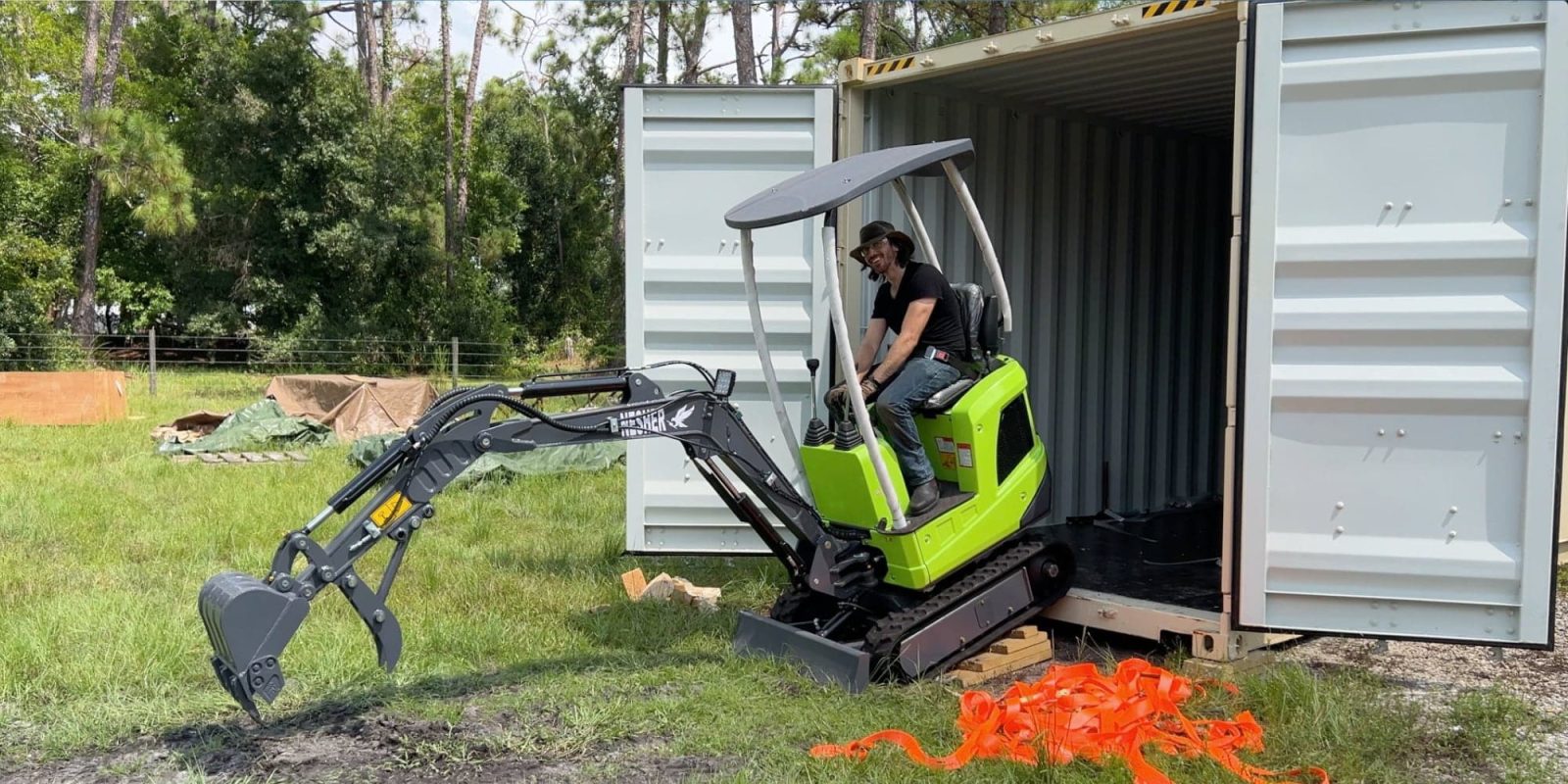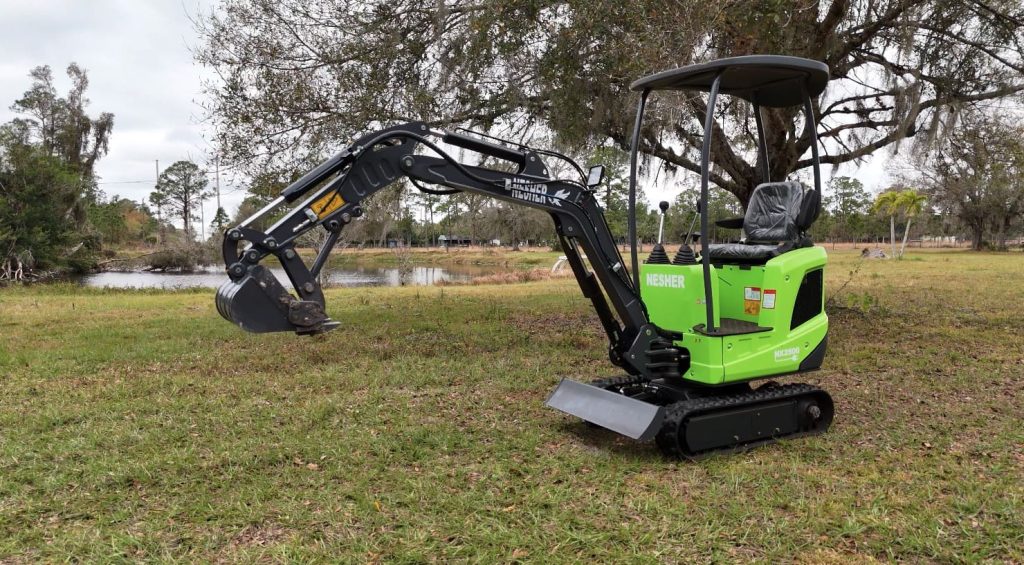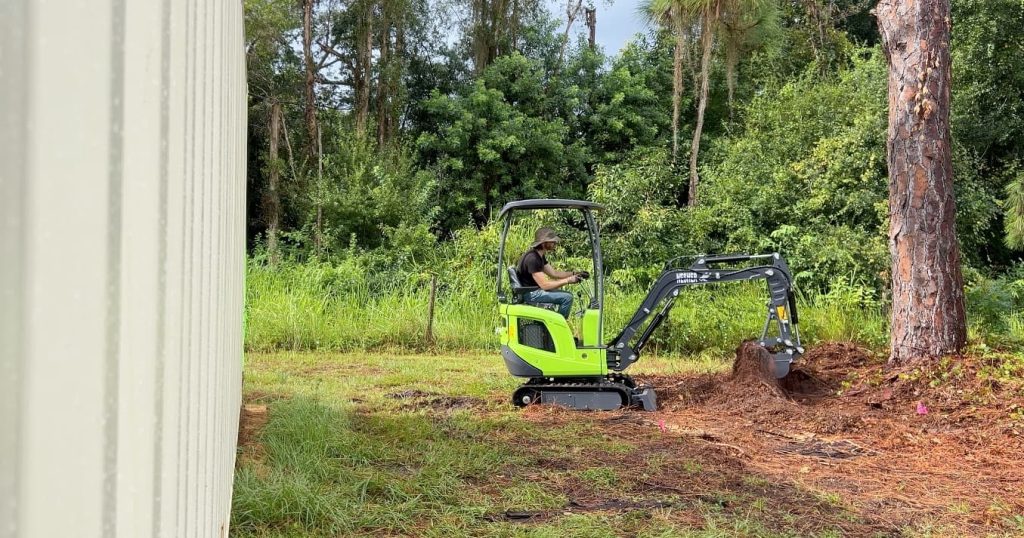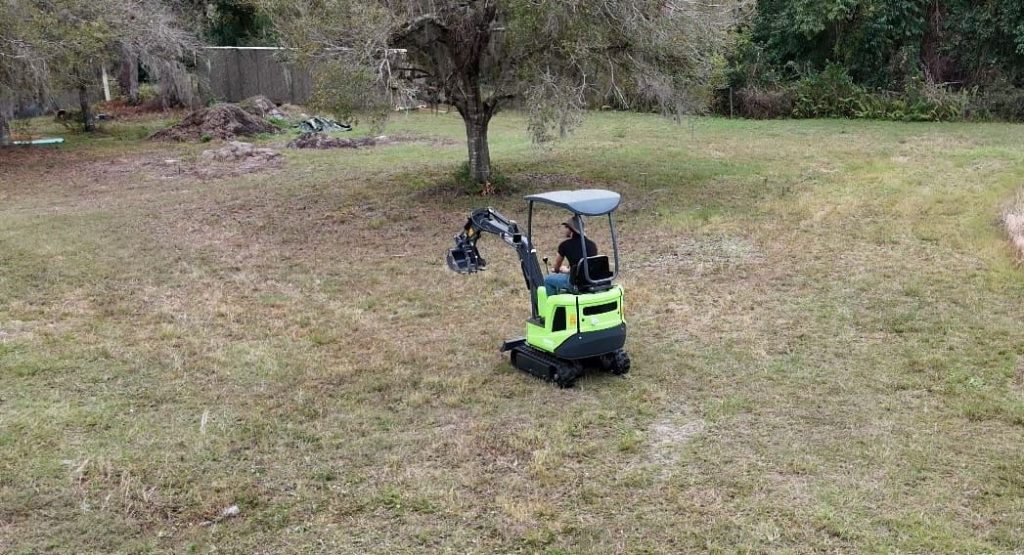
When I first got my hands on a Chinese electric mini-excavator, I thought it would be a fun little machine for digging a few holes and moving some dirt around. What I didn’t expect was just how useful and versatile it would become – and how often I’d reach for it for jobs that I never initially planned on tackling with a compact electric digger.
As I’ve watched all the fun reporting on new electric excavators, I’ve looked on in envy at what the current state of the art is… if you’ve got a quarter million bucks burning a hole in your hefty pocket. They are amazing machines, but I feel like the kid sitting outside of the sandbox and looking in, never able to play with the toys myself. But as it turns out, as long as you don’t need a massive machine, a mini-electric excavator wound up offering me many of the same benefits.
These battery-powered machines are cleaner, quieter, and cheaper to run than their diesel counterparts, which is great. That’s exactly why I started with NESHER in the first place. But what really surprised me was how many odd jobs around my parents’ acreage my little NX2500 excavator managed to take over. Here are five unexpected ways I’ve been using my Chinese electric mini-excavator.

1. Trench digging for irrigation
This was actually one of the first “off-script” jobs I tackled. My parents needed to run some irrigation lines through their property for a new garden setup, and while I originally planned to help my dad out the old-fashioned way (with a trenching shovel and a lot of sweat), I had my first mini-excavator delivered only a month ahead of time, and the timing couldn’t have been more perfect.
I figured, “Why not?” and before I knew it, I was carving clean, even trenches in a fraction of the time. What would’ve taken an entire weekend by hand was done in about an hour or two, and with zero back pain. It’s a perfect example of how machines like this can turn exhausting, sweaty work into something you actually enjoy.

Ever since I hurt my back a few years ago, a part of my rude welcome to how the mid-30s feels quite different from the mid-20s, I’ve been a little more aware of the kind of stress I put on my body. While I’m still quick to grab a shovel when I need one, the thought of hand trenching all day with a shovel versus an hour in the operator’s chair was a no-brainer.
2. Tree planting made way easier
Planting one tree is no big deal. Planting 10? Or 20? That’s starting to become a project. Planting 50? That’s a whole day with a shovel – or just a couple of hours with the mini-excavator.
The machine makes short work of digging perfect-sized holes, whether you’re dropping in fruit trees, palms, or trying to reforest a bare section of land.

In the beginning, there was some trial and error, but I’ve learned that you can fine-tune your technique to get the hole shape just right, so the trees don’t settle awkwardly or too deeply. It’s still manual labor in a sense, since those joysticks don’t work themselves, but it’s a lot less manual than working the shovel all day!
I also found that I can use a simple yard sled to load the spoils onto, then use the UTV to drag it away to the spoil pile elsewhere on the property. If you don’t have a dump truck or mini-truck around, a yard sled is a cool little way to move heavy things easily by dragging them around.
3. Mulch moving machine
I hadn’t originally planned on using the excavator for this one, but I had a big pile of mulch that needed to get loaded into the back of my mini-truck to bring over to a planting area. Instead of shoveling it by hand or using buckets, I figured I’d see how the excavator would handle scooping and dropping. And it worked beautifully.
Is it a perfect loader bucket? Not really. But it does save a lot of time and effort compared to doing it by hand. For loose materials like mulch, compost, or even sandy soil, it’s a no-brainer.

I still generally prefer to go with one of my loaders for bulk material like this, but in a pinch, the excavator can move 4-5x the amount I can per shovelfull, and each pass is a heck of a lot less exhausting on me!
4. Grading around trees for a shipping container pad
Here’s one I definitely didn’t expect to work so well. I had an area near some trees where I wanted to drop a shipping container. The ground was a mess – uneven, root-covered, and just generally not flat enough for the container to sit level.
I figured I’d give the excavator a shot at scraping and grading the area flat, and with a little finesse, it worked surprisingly well. It took some careful passes, and I wouldn’t call it laser-level precision, but it was more than good enough to get the container settled evenly and safely.

I’ve since put a second container next to it and built a roof structure between them, so now I have a 40×10-foot (12×3-meter) covered parking area between two shipping containers. I’d say it worked quite well!
5. Hoisting and lifting logs (and other heavy stuff)
Now this one’s a bit outside the box – and outside the manual. These machines aren’t really designed for lifting heavy objects the way a larger excavator or crane is, but they’re surprisingly capable if you’re smart about it.
I’ve hoisted several hundred pounds with mine, like awkward loads or cut log sections. A lifting strap slung over the bucket makes it easy to mount weird-shaped things, and you just have to be careful about swinging around too quickly.
I added a manual thumb attachment, and that proved to be a real game-changer. I can now pick up logs and branches, spin them around, and drop them into the bed of the mini-truck like a tiny mobile crane. Again, one or two logs are easy enough to toss by hand. But when a tree or two comes down after a storm and there are 20 or 30 logs, my back is going to thank me for not trying to toss each one by hand.

Final thoughts
It’s easy to write off these Chinese electric mini-excavators as toys or underpowered knock-offs. But after putting on real-world use for everything from planting trees to loading mulch and lifting logs, I can say they’ve proven themselves. No, they won’t replace a full-size backhoe or dozer, but they’re not trying to. These things are for the small jobs – the ones that wear you out if you try to do them by hand and don’t justify calling in a pro crew. They’re for the homesteaders, not the contractors.
Add in the fact that they’re electric – so you can run them in a garage or barn without worrying about fumes –and you’ve got a pretty compelling machine for landowners, landscapers, hobby farmers, or anyone who wants a quiet, capable, compact helper.
They aren’t without their downsides. Run times are only between 4-6 hours, and the roughly 1 mph (0.6 km/h) walking speed is excruciatingly slow when you need to travel to the farther flung areas of the property. But at least they’re relatively quiet and vibration-free, not to mention emission-free, for that long traverse!

FTC: We use income earning auto affiliate links. More.


![At $28,000 off, is the Jeep Wagoneer S the best EV deal going? [update]](https://i0.wp.com/electrek.co/wp-content/uploads/sites/3/2025/06/jeep_wagoneer_deals.jpg?resize=1200,628&quality=82&strip=all&ssl=1)











